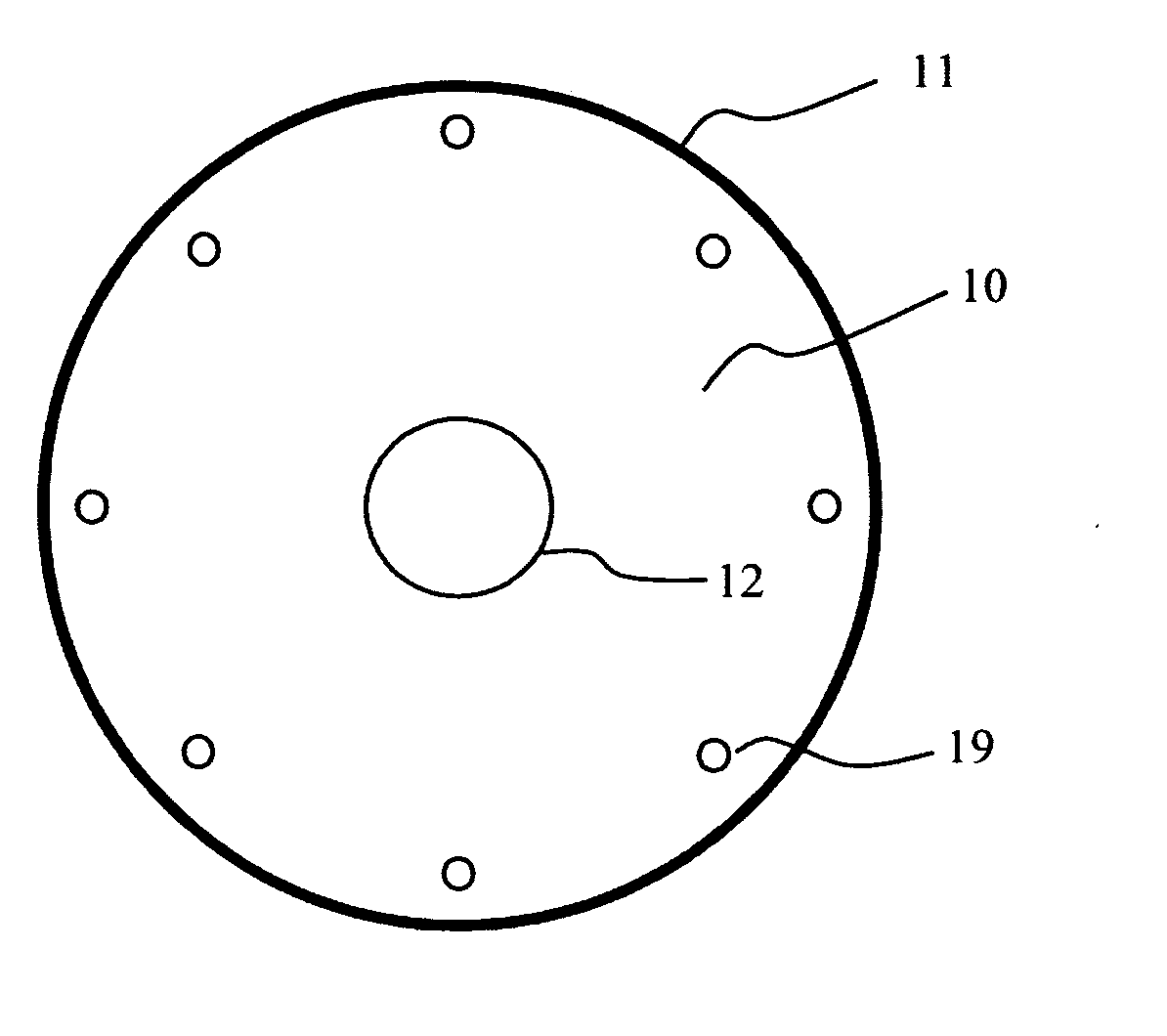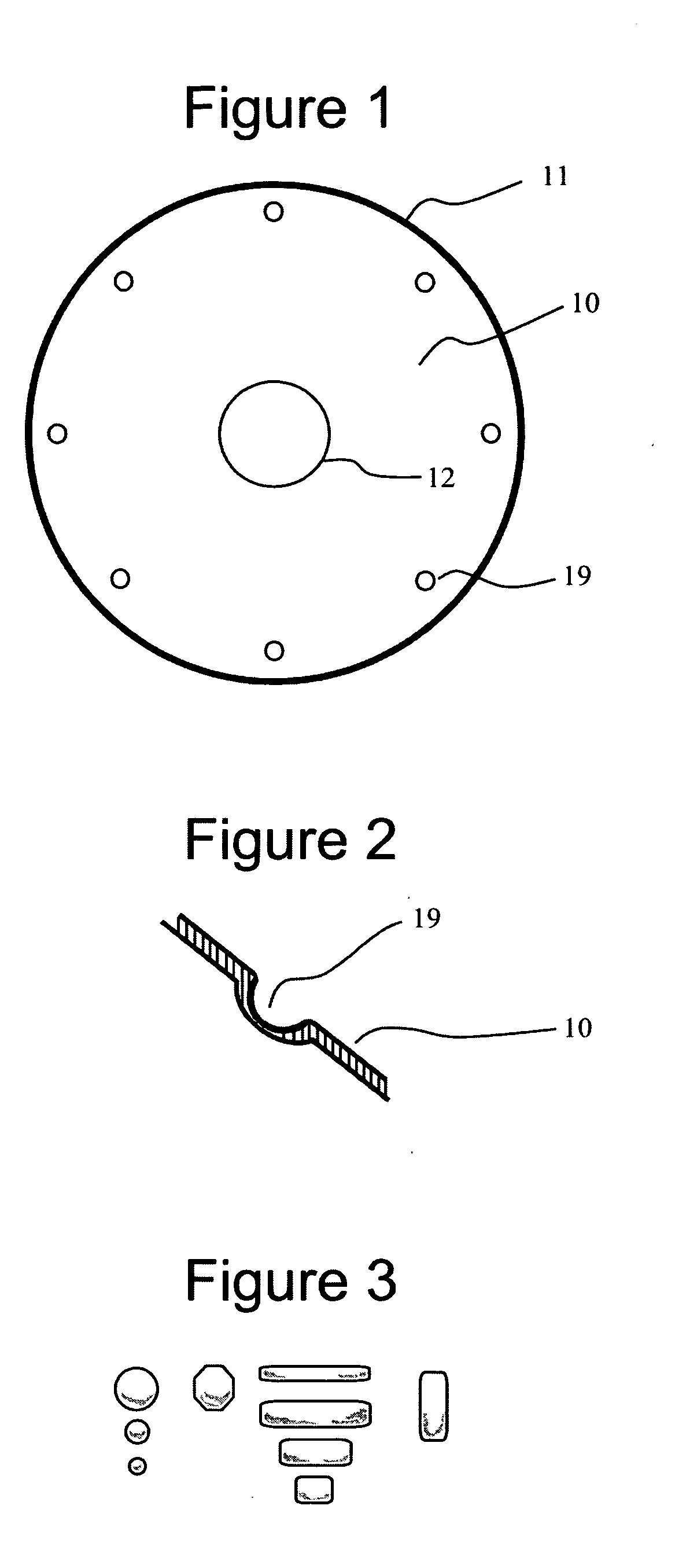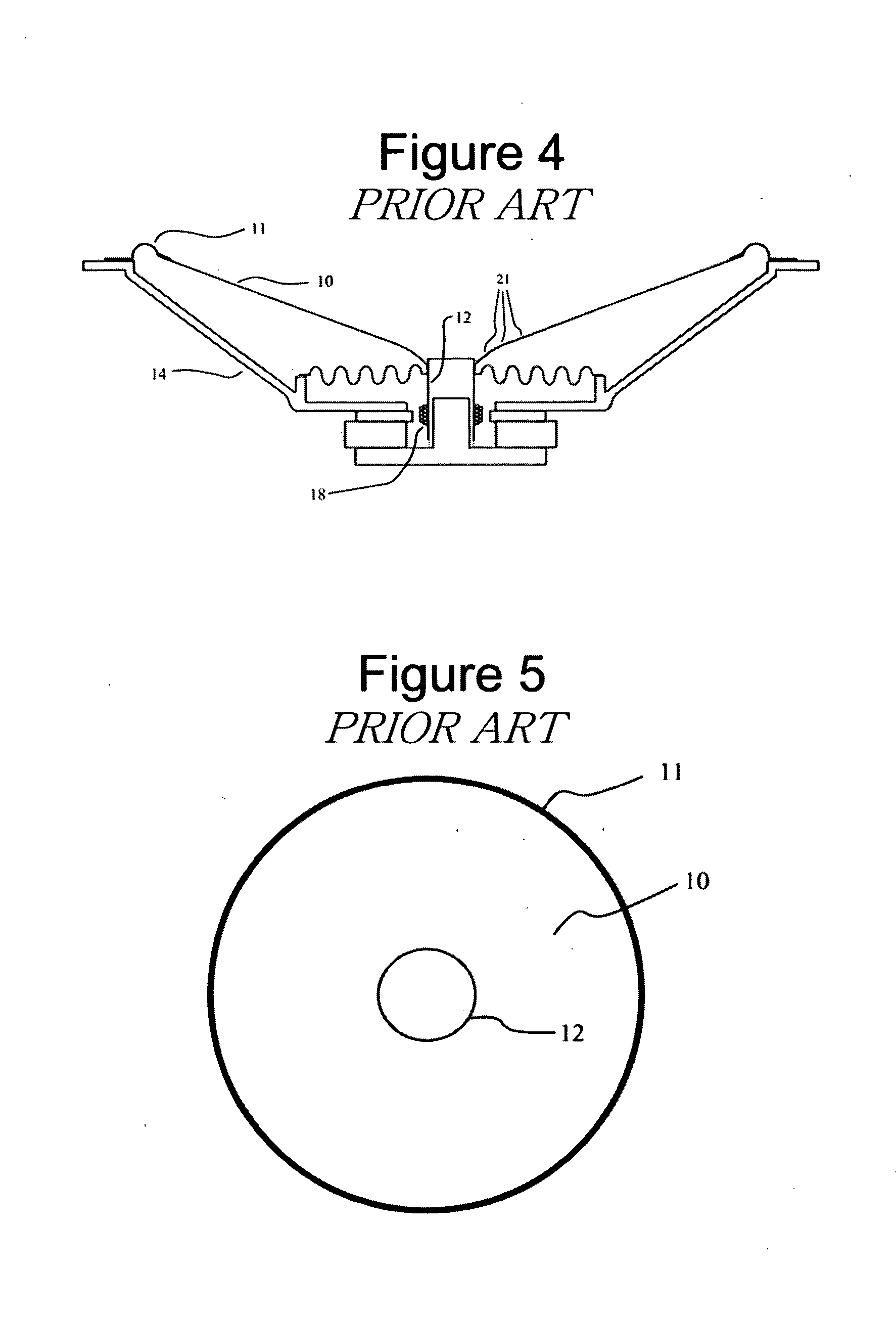Method and apparatus for controlling material vibration modes in polymer and paper high performance speaker diaphragms
a polymer and paper technology, applied in the direction of diaphragm construction, transducer diaphragm, electromechanical transducer, etc., can solve the problems of non-uniform velocity displacement of the diaphragm, non-linear acoustic output at varying frequencies, and the poor acoustic quality of the radiated sound of the loudspeaker transducer made with the above stiffening approach
- Summary
- Abstract
- Description
- Claims
- Application Information
AI Technical Summary
Benefits of technology
Problems solved by technology
Method used
Image
Examples
second embodiment
[0041] A second embodiment of the invention is intended for transducer diaphragm 10 wherein the diaphragm material is formed paper sheet or pulp paper materials. Here the invention is applied to the paper diaphragm loudspeaker transducer of FIGS. 4 and 5. The frequency response of the loudspeaker transducer of FIG. 4 and 5 is shown in FIG. 6. The dimpling pattern to control the five kHz center frequency diaphragm material vibration mode is shown in FIG. 20. As in the preferred embodiment, the second embodiment utilizes the dimple shape of the preferred embodiment.
[0042] In the second embodiment, eight cold die dimples are impressed in the cone. The dimples have the cross-sectional shape shown in FIG. 2. In the second embodiment, the dimples alter the mechanical impedance of the dimpled area of the diaphragm material by displacing the location of paper fibers and disrupting adhesions amongst the paper fibers in the dimpled areas of the material.
[0043] The control provided by the ei...
PUM
 Login to View More
Login to View More Abstract
Description
Claims
Application Information
 Login to View More
Login to View More - R&D
- Intellectual Property
- Life Sciences
- Materials
- Tech Scout
- Unparalleled Data Quality
- Higher Quality Content
- 60% Fewer Hallucinations
Browse by: Latest US Patents, China's latest patents, Technical Efficacy Thesaurus, Application Domain, Technology Topic, Popular Technical Reports.
© 2025 PatSnap. All rights reserved.Legal|Privacy policy|Modern Slavery Act Transparency Statement|Sitemap|About US| Contact US: help@patsnap.com



